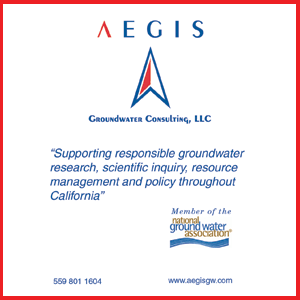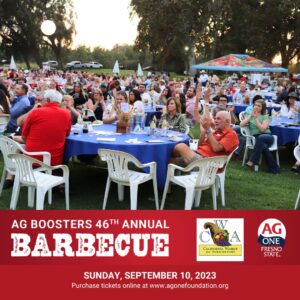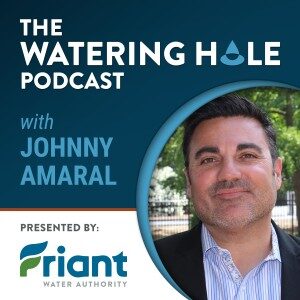The Westlands Water District held its board of directors meeting on Tuesday, August 15, 2023 at its Fresno headquarters and on Zoom. Before the regularly scheduled 9:00am board meeting the Administration and Finance Committees met starting at 8:00am. When I first started attending Westlands meetings it was mind boggling to me. They have nine directors, which is at the bigger end of the number-line for a district. Much of the decisions were made in committee and ratified by the board. It was efficient and a degree of expertise was accrued by committee members but it also felt less upfront to some. Now more of the district’s business is covered in the board meeting.
The Meeting
The meeting began at 9:09am with Chairman Jeff Fortune calling for those assembled to pay attention. It was fun because one of the board members called to Elizabeth Jonasson, Public Information Officer, who was in the hallway, “Hurry up, they’s waiting for you.” Ms. Jonasson hurried up to the speaker’s podium and prepared to give her report. Actually, there were a couple of things to take care of first. Bless her heart, she was a good sport.
It was determined there were no corrections or additions to the agenda and the consent calendar was approved. There was an update to the water supply report. Tom Boardman called in saying there is 3.7 million a/f in storage at Lake Shasta, a record. There could be some pumping reductions in September for the Fall X2, or smelt or some such. There is enough storage in Shasta and Folsom Reservoirs to keep things running well into the fall. Shasta is estimated to fill to 97 percent by May so there should be plenty of cold water next year and an El Nino on the horizon.
Boardman said storage is tracking so well right now there shouldn’t be too big a reduction of pumping even with X2. Recall X2 refers to the releases through the Delta to push salt back into the Bay. San Luis Reservoir’s federal share for this August is like 30,000 a/f higher than the record. Demands are up as everyone is trying to use their share of the water this year.
Director Kevin Assemi thanked Boardman for his report and asked if SLR could spill by the end of this year or the start of next. He was concerned the district could lose carryover by mid-April. Boardman said SLR may well fill by the end of the year and there might be some foregone pumping loss but he thinks the district can clear out its carryover in time. Director William Bourdeau said growers want to know how much they can carryover if they can’t get enough recharge in the ground to use all of the supply. Lt. General Manager Jose Gutierrez said that will depend on how much carryover the grower has taken on. All agree as much recharge as possible is the goal.
Legal Report
Attorney Jon Ruben reported the biological assessment and consultation is scheduled to have the findings released this fall. Also, a group of social warriors filed a complaint with the federal EPA that the State Water Resources Control Board isn’t taking into account the needs and impacts on tribes and people of color in its water plan. The EPA has taken up this complaint and will be investigating the State Board. How’s that for a twisted mess? The far left continues to pile it on. You won’t often see me come to the State Board’s defense but this is my State Board to criticize and the Biden administration has once again wandered deep into Orwellian Ministry of Truth territory and needs to stop. Votes count.
this complaint and will be investigating the State Board. How’s that for a twisted mess? The far left continues to pile it on. You won’t often see me come to the State Board’s defense but this is my State Board to criticize and the Biden administration has once again wandered deep into Orwellian Ministry of Truth territory and needs to stop. Votes count.
Ruben reported on the federal side of legislation there have been four bills sponsored by California Senators impacting ag and water. The House Western Caucus has formed an ESA review committee. Comments are due by the end of this week. This includes updating NEPA. Ruben said WWD hasn’t commented yet but is working with others to do so. On the state side there is an upcoming opportunity for General Manager Alison Feebo to meet with state legislators.
PIO & Other Reports
Jonasson reported on how many times staff has been able to meet with members of the public and social media outreach.
Gutierrez said the new offices have been painted but the boardroom ran afoul of a City of Fresno inspector and that slowed down stuff. However, there should still be a meeting held there by October.
Bourdeau said the Family Farm Alliance will be hosting a trip to DC this fall and he plans on being a part of this. Russ Freeman reported on the San Luis Delta Mendota Water Authority. He said water rates were dropped by more than $3 per a/f. There was also a refund that Westlands will benefit from. A presentation was given on barriers in the Delta. Feebo and Bourdeau sat in on the planning workshop after the last SLDM meeting. Director Ross Franson reported ACWA will be holding a Region Six and Seven meeting and tour in October. Feebo is the keynote speaker. Good for her and good for ACWA.
Finance & Other Stuff
Bourdeau said the finance and administration committee meeting was “robust” and asked CFO Bobbie Ormonde to elaborate. Ormonde got to deliver the good news that a refund will be going out to growers.
SGMA
Engineer Kiti Campbell said WWD has approved 230 recharge projects, with 65 of them being ASR, where they pour water down a well. About 578 a/f per day is being recharged currently. July saw 17,000 a/f recharged, making year to date recharge more than 100,000 a/f. The district has two programs to incentivize recharge and they are working very well. WWD will pay growers $100 per a/f to recharge on their own land and WWD retains the groundwater credit. Or, a grower can pay half price and split the groundwater credit with the district. I think I heard there is $15 million available in these programs.
Campbell reported DWR wants the Westside GSA’s GSP to be updated. DWR wants more monitoring and more measurable objectives on drinking water wells. The maximum contaminant levels are the focus of this additional reporting. Bourdeau asked if DWR is aware of the WWD’s project to improve the water quality for disadvantaged communities and Campbell said yes, DWR is aware but wants more. There is a technical advisory meeting next week and a recharge workshop on the 24th. Bourdeau asked if there are grants or loans out there for more equipment. I believe there are.
Water broker Eric Johnson called in and asked for the district to make groundwater transfers available as soon as possible. He said he’s aware of several thousand acre feet that could come into play immediately. Assemi agreed with him and Feebo said staff will expedite this as soon as possible.
Jon Reiter asked if there is more the district can do now to incentivize increased recharge. He said he didn’t have an immediate recommendation but wants this to be at the forefront. Assemi said it would be good to take a look at land along canals and see what could be done. Director Justin Diener asked Freeman about the cost of this and grower Dan Hartwig said don’t forget the cost of diesel. Will Coit said he believes said an exchange between upper and lower aquifer credit exchanges could benefit this, if I understood. Lindsay Cederquist said it could be instructive to compare the cost of spilled water with the costs of additional recharge if I understood correctly. Reiter said he’d like to see a workshop or special board meeting right away. Feebo said beyond WWD’s need there are others reaching out to the district to help with recharge.
Jeanie Someone said online she’d like to see more info online about where to recharge and how much it will cost. Some of the land isn’t suitable for recharge so she’d like to see where the suitable land is located. Campbell said there are maps on the WWD website that differentiate between upper and lower recharge. Bourdeau asked to be sure the drainage impaired areas are clearly marked. Fortune added there is a recharge exchange feature on the WWD website where folks can find recharge opportunities. Feebo said she likes the idea of a workshop. Assemi reiterated his position that the need for transfers should be a priority.
Freeman said there is 1.4 million a/f available to the district this year. On the usage side Freeman said as a point of reference (not the gospel) the district may use less than 1.3 million a/f. There is a turn back pool proposed for the district to use to help implement recharge. If I understood correctly. This is in the board packet for reference. Under the current programs the district could recharge 160,000 a/f but it relies on growers to participate to increase that amount.
 Gutierrez said based on the current recharge rates he believes the district can recharge 160,000 a/f by November. If a water user experiences a reschedule cap loss the proposed program would allow them to utilize a turn back pool. He listed various proposed costs. He asked growers to make their intentions known by September.
Gutierrez said based on the current recharge rates he believes the district can recharge 160,000 a/f by November. If a water user experiences a reschedule cap loss the proposed program would allow them to utilize a turn back pool. He listed various proposed costs. He asked growers to make their intentions known by September.
Franson said there are still capacity restraints and he’s looking for a way to get it in the ground. Gutierrez said whether the numbers end up better or worse they are looking to recharge. Assemi said Pleasant Valley has offered to purchase 40,000 a/f of water but it didn’t happen right away and since then the requested amount has continued to decrease month by month. Now they want 5,000 a/f. He felt it would have been wise to have sold the water and used the money to help WWD growers. Freeman said Pleasant Valley is in the CVP place of use. If it is a common landowner they can transfer. Feebo said staff will follow up on this.
Reiter said in 2017 there was a request for transferring supplement water without a turn back. But a Bureau white paper said there may be a problem. Reiter didn’t see it and believes this would be good for all involved. Hartwig asked if there is any chance for more 215 Water. Gutierrez said yes and what is called F3 water could be available. Diener moved to direct staff to implement CVP turn back for 30,000 a/f. and it passed unanimously.
Land & Water Benefits
Feebo said the district is looking at revising its Article II and asked Gutierrez to elaborate. Gutierrez said the proposed amendment would allow benefits to continue if a landowner were to convert croplands to other uses like solar. At question is what happens to the water allocated to the land. Can it be moved to other areas within the district? Can it be recharged for credit? He asked what if someone put 100 percent of their land in solar, would the owners still get the water? Gutierrez said the proposed amount of land to convert to solar is 100,000 acres but he doesn’t believe there is a reasonable expectation this much land will convert. He said the board could put some guardrails on this to insure the other growers are not harmed. The municipal and industry – M&I use would change greatly. If I understood the M&I use is based at five a/f per 160 acres. So the solar land would be using much less water but the owners would get a butt load of extra water – and how much and do what with it?
would the owners still get the water? Gutierrez said the proposed amount of land to convert to solar is 100,000 acres but he doesn’t believe there is a reasonable expectation this much land will convert. He said the board could put some guardrails on this to insure the other growers are not harmed. The municipal and industry – M&I use would change greatly. If I understood the M&I use is based at five a/f per 160 acres. So the solar land would be using much less water but the owners would get a butt load of extra water – and how much and do what with it?
Gutierrez said staff needs direction to move forward with any changes. He said based on this morning’s F&A Committee meeting there are still questions to be explored. He said at this time staff has no recommendation.
Feebo reminded the board the decision made today isn’t binding forever. She said the impact to the growers is serious and must be weighed out. She said there isn’t a great deal of land suitable to solar and this could help growers in the long run with a more reliable supply. Director Frank Coelho asked if this is fair for all the growers. He said there are certain areas of the district with solar suitability and not all the growers can benefit from this. He didn’t want to see solar land to get 100 percent of the water allocation. He said Westlands is a water district, not a solar district. He said it is lucrative to go solar and give them all the water supply on top of this isn’t right. He said giving 50 percent of the water is closer to fair.
Franson said he doesn’t see any difference between this and landowners who have the soil to grow pistachios or almonds and those who don’t. Director Jeremy Hughes said when the drainage lands were taken out of business most of those landowners lost big. He said he grows in drainage impacted lands and there isn’t enough surface water. So why limit a 90 acre grower’s option to make some money on the land? He could benefit from that additional water supply and thinks it’s OK to make this available if the water stays in the district. Hughes used as an example – his aunt has some small acreage she’d like to convert to solar and he’d like to get the water.
additional water supply and thinks it’s OK to make this available if the water stays in the district. Hughes used as an example – his aunt has some small acreage she’d like to convert to solar and he’d like to get the water.
Assemi said more than half a million acre feet of possible recharge was lost this year and there are folks who have been in the district 75 years calling him saying they have to sell because they don’t have water. He wants to see all the options on the table and that’s what a good district should do. Hughes said there are small acreage landowners who would like to go solar and use the water elsewhere. Coelho asked why should a landowner convert its lands to nonfarming and still benefit from farm water?
Assemi comes from a land development family. He said the way this solar program is going isn’t how it should be done. He said the directors shouldn’t be threatened with legal action to have open discussions with growers about recharge and solar.
Reiter said there is a misstatement about how solar works. He said the water doesn’t go to the solar developer as was stated at some point of the discussion. Dan Errotabere, landowner and former director said don’t call it solar farming, it is solar development. He said when you have a changing demographic from farmers to farmers with solar. He said taking the water into the district’s management benefits all the growers and not just a few. He said he has concerns about non-farming landowners voting. In other words the district could end up with directors pitting solar interests against farming interests. Errotabere is not against solar but he is against solar farming if I understood.
Grower Rebecca Kaser said farming isn’t the same after SGMA as it was when her grandfather was farming. She wants the solar option with water so her kids can farm. Hughes said his town of Tranquillity was ruined by the drainage. Diener asked to poll the board but it didn’t happen and the discussion continued.
Grower Susan Byers spoke and said change of this magnitude is big. She said growers going to solar are not guaranteed success. She said there could be some new considerations as time goes by that will require changes in policy. Bourdeau said he’s in favor of remembering the transmission line component and Fortune said that was a good point.
Grower Will Coit said something funny but I missed it. Too bad, he comes up with some good ones. I did hear him say solar will help him farm in a sustainable way. He said the graph presented by Gutierrez was very helpful in looking at the pros and cons. He said another consideration is one of the leases he has doesn’t want to grow at this time and he’s looking at losing that surface water. He is in favor of a higher transfer rate for solar water than 50/50. He wants, if not 100 percent, at least 30/70.
Another small farmer, Tarin Deep wanted 100 percent solar water. Growers and former director Sarah Woolf said while this won’t work for everyone it isn’t the board’s place to make decisions for landowners in how to run their business and it shouldn’t limit their water.
Robin Singh is a grower who said he’s shocked to hear any director would hold back a grower from getting the best opportunity. “Let them get out of this [Gehenna],” he said. Assemi asked him if the Golden State Energy plan is on track it will still take five to 10 years before any solar is in place. He said he still has to farm. Singh said if everyone had an equal deal that would be one thing. Coelho said his position is he’s representing the growers in the [Gehenna]. Coit said if this policy could be structured to give 100 percent water and lease the allocation out that would help. Fortune said if you have 100 percent water and can’t find a grower to use it you’ll loose in a year like this. Coit said to remember there is only so much ground that can be moved to solar so it won’t take over the entire district.
Feebo said she’s hearing a strategic plan needs to be developed and in place. The board was polled and four directors were in favor of 100 percent and two wanted to have a plan before that amount is determined. Fortune read a statement saying the majority of the board wants to amend Article II and wants staff to develop a resolution with periodic reviews. The water made available under these changes must be for beneficial use or banked if outside of the district. Staff is so charged. Feebo suggested a workshop. There is a grower workshop tomorrow. Assemi asked if the board could meet in closed session with Golden State Energy and Ruben said that wouldn’t be possible under the Brown Act as proposed.
Public Comment & Closed Session
Fortune asked Golden State Energy’s Patrick Malloy to give an update. Malloy said every meeting with legislators and regulators about the solar program has gone well. He said this discussion has been important to flesh out agreements. He said they will continue to work with the board, the landowners, the district and the government. He said this is a large project with a lot of moving pieces. He said he needs to define the project by December’s end to turn the CEQA lead over to Westlands.
Ruben said this is the public comment section and legally this topic needs to be discussed under an agenda item. I was wondering about that. Assemi said he needs the info before voting on a resolution next month. Malloy said he’d be happy to present at any board, special board or workshop as needed.
Coit asked about Item 13 dealing with land near Shasta scheduled after closed session on the agenda. Ruben said it is about a CEQA determination that I’m guessing needs to be discussed and voted on in closed session first then further action taken in open; not uncommon in special district meetings like this.
With that the open portion of the meeting mercifully ended at 12:08pm. Go be kind to yourselves and each other.
DISCLAIMER OF RESPONSIBILITY; Waterwrights strives to provide clients with the most complete, up-to-date, and accurate information available. Nevertheless, Waterwrights does not serve as a guarantor of the accuracy or completeness of the information provided, and specifically disclaims any and all responsibility for information that is not accurate, up-to-date, or complete. Waterwrights’ clients therefore rely on the accuracy, completeness and timeliness of information from Waterwrights entirely at their own risk. The opinions expressed in this report are those of the author and do not represent any advertisers or third parties.
ALL RIGHTS RESERVED. Copyright 2023 by WaterWrights.net/DAW
Westlands Water District
3130 N. Fresno Street, Fresno CA 93703 Phone:559/224-1523
Board: Jeff Fortune -President, Jim Anderson – Vice President, Frank Coelho Jr., William Bourdeau, Kevin Assemi, Ross Franson, Jeremy Hughes, Ernie Costamagna & Justin Diener.
Staff: Allison Feebo-General Manager, Jose Gutierrez-Lt. General Manager, Jon Rubin-Attorney, Russ Freeman-Deputy GM Resources, Kitty Campbell-Supervisor of Resources, Bobbie Ormonde-VP of Finance & Administrative Affairs, Bill Pierce Director O&M, Jim Carter-IT Guru and Elizabeth Jonasson- Public Affairs Representative.
About: Without irrigation, farming in the Westlands area of California would be limited and ineffectual. The history of Westlands is one of continual adaptation, careful water stewardship and advanced technology. By maintaining a fierce commitment to sustainability, the Westlands’ comprehensive water supply system continues to adapt, educate, and surpass conservation goals. Throughout its history, Westlands Water District has demonstrated a lasting dedication to water conservation and recognized that the long-term survival of its farms depends on the effective management of California’s precious water resources. From www.wwd.ca.gov
SGMA: Westland WD is in the Westside Subbasin and the Westlands WD GSA. DWR #5-022.09































